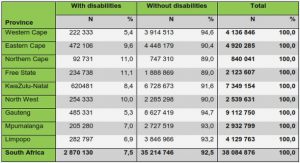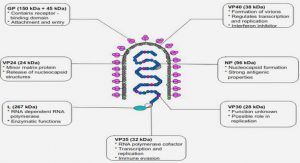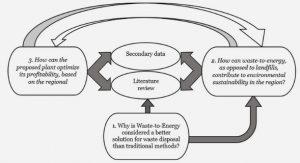Get Complete Project Material File(s) Now! »
Lab-on-a-Chip: magnetic microparticles and immunoassays
Most commonly magnetic microparticles are composed of an ensemble of magnetic nanocrystals enclosed in a non-magnetic matrix made of an inert and bio-compatible material such as polymer or silicon dioxide. The nanocrystals are usually made of iron oxides such as magnetite (Fe3O4) or magnemite (-Fe2O3), pure metals (amalgams of transition metals) (Ni, Fe, Co, Mg or Zn) or rare earth materials (NdFeB or SmCo)[61], [62]. Iron oxide has a better stability against oxidation than pure iron, and among oxides, maghemite is more stable than magnetite in aqueous media[63]. The origin of magnetic properties arises from the spin and orbital motion of electrons. The orbital motion of electrons around the nucleus produces its own orbital magnetic moment. The spin magnetic moment stems from the rotation of the electron around its own axis (Figure I.10). Consequently, electron spinning and orbiting, often called spins for brevity, act as tiny current loops[64].
Superparamagnetic microparticles
As mentioned above, magnetic domains exist because they minimize the magnetostatic energy of the system. In large particles of the order of micrometre or more, the formation of domain walls is favoured and results in a multi-domain structure of the particle even with a small magnetic field, which explains the relatively low coercive files (Figure I.14) [70], [71]. If the particle size decreases down to a critical particle diameter 𝑑𝑐, the formation of domain walls becomes energetically unfavourable, thus the system remains in a single domain state.In such case, any change of magnetization needs generally a large magnetic energy). As the particle size decreases below the single domain value 𝑑𝑠, ,the thermal energy (ET=KB.T) becomes of the same order as the magnetic energy barrier(ΔE=Keff.43.π.rp3) Therefore, the spin of the particle is free to fluctuate in response to the thermal energy i.e. the particle magnetic moment can jump between two different stable orientations with a frequency higher than the experimental time scale (see Figure I.13).
Heterogeneous immunoassay
During heterogeneous immunoassay, immunoreactions occur on a solid surface. Thisallows easy analyte preconcentration, washing and consequently a lower limit of detection (LOD). In addition, this approach can be automated in 96-well microplates, allowing easy separation of the immune complex and free forms, and high-throughput analysis. To obtain a high sensitivity, the detection step can be based either on fluorescent or radioactive molecules or a product of enzymatic reaction. Among heterogeneous immunoassays, ELISA is one of the most widely used in clinical diagnosis. When performing an ELISA, the immunoassay starts with the introduction and immobilization of capture Ab (or Ag) on a solid support. The simplest form of immobilization is a physical adsorption of antibody or antigen onto the surface [86–88].After blocking and washing steps, a sample containing an unknown amount of antigen (or Ab) is introduced to interact with the capture Ab (Ag). In case of sandwich ELISA, a secondary Ab is incubated, this Ab being conjugated with an enzyme (e.g. Phosphatase alkaline or Horse radish Peroxydase) whereas it is labelled by a radioisotope (125I or 14C) in case of radioimmunoassay (RIA). The main limitation of this format is its lesser kinetic efficiency: It relies on the diffusion of a single partnertowards a solid surface on which all of its reaction partners are immobilized. This, leads to a low rate of immunological capture and long analysis times, because the typical diffusion distance is given by the average distance between particles (proportional to the inverse of the 24 number concentration of PARTICLES to the power 1/3), whereas in homogeneous immunoassays, it is proportional to the inverse of the number concentration of MOLECULES to the power 1/3.ELISA techniques can be broadly classified as competitive or non-competitive.
In a competitive assay, the sample is incubated in presence of a given amount of labelled Ag (see Figure I.17). The target antigens present in the sample will thus compete with labelled Ag to interact with the capture Ab. Thesignal intensity allows to estimate the amount of the labelled antigens bound during the test and consequently the amount of target. As a result, a high signal indicates a low concentration of target antigen in the sample and vice-versa. Thus, response is inversely proportional to the amount of label[89].
Technical aspects of microparticles manipulation
As previously mentioned, microparticles are often used as immunosupport to improve immunoassay performance. These particles exhibit different properties, in particular they can be either magnetic or non-magnetic. The method used for beads manipulation mainly dependson the beads properties.
Chemical and mechanical trapping of microparticles
When dealing with non-magnetic beads, several techniques have been developed to arrange beads in specific area of a chip according to their surface functionalization. The method proposed by Andersson,is based on the formation of a dot array of self-assembled beads. It relies on microcontact printing to generate patterns with desired functions (seeFigure I.20.a)[96]. Using a structured stamp, streptavidin coated-beads are assembled on the surface through the strong interaction with biotin printed on the surface (Figure I.20.b and c.). In addition, a hydrophobic Teflon-like film (C4F8) defined by lithography, separates dots so as to prevent cross-contamination of liquid from each other (Figure I.20.a).
Magnetic microparticles concept for bioassays
Magnetic fields offer appealing tools to handle magnetic objects [110], [111]. Furthermore, in the last few years, functional magnetic nanoparticles and microparticles presenting a wide range of functionality have become off-the-shelf products [112], [113]. Therefore, magnetism has been naturally combined with microfluidics, offering the possibility to adapt bioassays on the surface of magnetic beads, trapped inside a microchannel. However, the exposure of the functionalized beads surface to a microfluidic flow for antigen capture has important consequences on the bioanalysis sensitivity [63], [65]. This is the reason why several strategies have been developed to improve the manipulation of magnetic beads using actuators. Herein, we present some of them, classified into two types: those using electromagnets, and those using permanent magnets.
System using permanent magnets
Permanent magnets, used in microfluidic applications, are usually composed of neodymium iron boron (NdFeB). Such permanent magnets enable the formation of a dense and static bead plug by magnetically trapping the magnetic beads in a microchannel, even if they are placed several millimetres away from the channel [123–125]. Hayes et al. proposed a bead-based microfluidic immunoassay using such static plug of 1-2 𝜇𝑚 sized magnetic beads [124]. A heterogeneous immunoassay has been demonstrated with a direct interaction of fluorescein isothiocynate (FITC) using beads coated with anti-FITC Ab. First, a strong rare-earth disc magnet placed over the microchannel enables the plug formation, thereafter the beads are exposed to the flow of appropriate reagent and analyte solutions (Figure I.27). Using such magnetic particle trapping, the authors also reported complete sandwich immunoassays for the calibration of parathyroid hormone and interleukin-5, down to a few 𝜇𝑔/𝑚𝐿 (2 to 5𝜇𝑔/𝑚𝐿).
Table of contents :
Chapter I. Magnetic handling of particles in microfluidic devices
1. Microfluidics toward a Lab-on-a-Chip
a. History and state-of-the-art
b. The basis physics of microfluidics
i. Reynolds number
ii. Diffusion
iii. Flow control
2. Lab-on-a-Chip: magnetic microparticles and immunoassays
a. Magnetic microparticles for bioanalysis
i. Magnetic properties
ii. Superparamagnetic microparticles
iii. Structure of microparticles
b. Immunoassay principle
i. Heterogeneous immunoassay
3. Technical aspects of microparticles manipulation
a. On-chip microparticles manipulation
i. Chemical and mechanical trapping of microparticles
Beads immobilization based on chemical interaction
Mechanical trapping
ii. Dynamic manipulation of microparticles
Optical tweezers
Acoustic waves
Dielectrophoresis
Magnetophoresis
b. Magnetic microparticles concept for bioassays
i. System using electromagnets
ii. System using permanent magnets
Chapter II. Integrating fluidized beds in microfluidic systems
1. Introduction
2. Magnetic microparticle transport in a microfluidic device
a. Magnetic force acting on a particle
b. Viscous drag force
c. Particle mobility
3. Magnetic microparticle motion within a plug
a. Microchip design: 1st generation
b. Microparticle capture principle
c. Structure of the magnetic plug
d. Forces acting on a magnetic bead in a flow
e. Hydrodynamic behaviour of the plug
i. Experimental procedure
ii. Hydrodynamic characterization of the plug
Particle bed behaviour
Influence of microparticle amount
Influence of the gap between the magnets
Influence of the microparticle size
f. Conclusion
4. Second device generation: towards an integrated fluidized bed
a. Motivation
b. Fluidized bed: some basics
c. Influence of the bed porosity on the fluid flow
d. Darcy’s law: pressure drop across the bed
e. Pressure-flow relationship in fluidized bed: Minimum fluidization velocity .
f. Magnetically assisted fluidized bed
g. Minimum fluidisation velocity
5. Microchip based fluidized bed
6. Spatial magnetic field distribution
7. Fluid flow and particle distribution in magnetic fluidized beds
a. Microparticle capture
b. Pressure drop in the magnetic bed
c. Pressure vs. flow rate hysteresis
d. Flow distribution in the fluidized bed
e. Bed expansion and porosity
f. Fluidized bed activation: control of the fluid resistance
g. Balance between magnetic and drag forces
8. Conclusion
Chapter III. On-chip immunoextraction
1. Introduction
2. Model compounds Ab/Ag
3. Off-chip Ag capture and elution
a. Off-chip characterisation and optimisation of the protocol
i. Materials and methods
ii. Off-chip experiments
4. On-Chip Immunoextraction
a. Description of the experimental set-up
b. Optimisation of the on-chip immunoextraction
5. Results and discussion
6. Preliminary conclusion
Conclusion
Appendix
References






